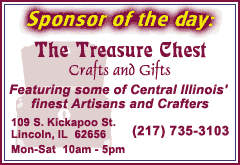|
How long does it take a person to
receive 583 patents? If you average one patent per month for 48
years, then you'll come close to Jerome's total. Many of his patents
became commercial successes, which is remarkable considering that
fewer than 2 percent of all patents ever produce a profit for the
inventor!
In all of history, there are only two
inventors who have held more patents than Jerome Lemelson: Thomas
Edison and Edwin Land, of Polaroid fame. One major difference
between them, though, is that Edison and Land both had huge staffs
helping them invent. Lemelson had a staff of just one -- himself.
According to the Lemelson Foundation
website, these are some of the more well-known products which Jerome
either invented or made improvements to: Bank ATMs, the tape
mechanisms found in Sony®
Walkmans®,
cordless phones, cassette players and camcorders, fax machines and
personal computers, and crying baby dolls. One of his inventions --
a universal robot that could measure, weld, rivet, transport and
even inspect for quality control -- used a new technology called
machine vision.

The technology in his machine vision is
what allows bar code readers to scan items at the checkout lines in
grocery stores, and it is this technology for which he is most
well-known.
I interviewed a friend of the late
Jerome Lemelson, Don Costar of Reno, Nev., who recalled having lunch
with Jerome at a Chinese restaurant one day. Don noticed that
Jerome's mind began to wander from the conversation they were
having. Knowing that Jerome often had two things going on in his
mind at the same time, Don asked him what new invention he was
thinking about as they were talking. It turned out he was
trying to figure out a way to improve upon the design of a product
that has existed in its current form for hundreds of years:
chopsticks!
[to top of
second column in this article]
 |

Lemelson was a big supporter of the
rights of the independent inventor against the big companies,
having been an independent inventor himself. He took the big
companies to court, but he lost more often than he won. There were
20 court battles altogether, and these court battles often took
him away from what he did best: invent.
There's an ongoing debate over
whether Jerome spent too much time litigating over his patents.
Some say that he would invent minor improvements to patents that
already existed before companies made those improvements and then
challenge that they infringed on his patents. In a Pete
Rose kind of way, this is probably the only reason why Jerome
Lemelson is not in the
Inventor's Hall of Fame, which is located
in Akron, Ohio.
To date, the Lemelson Foundation has
pledged $70 million towards its domestic and foreign innovation
programs. Its $10 million donation to the Smithsonian Institution
was the largest donation the Smithsonian has ever received. The
Lemelson Foundation gives out the $500,000 Lemelson-MIT prize each
year to the inventor whose works make the greatest contribution to
society. The award is known as the "Oscar for Inventors."
When Jerome was diagnosed with cancer
in 1996, he did what you would expect him to do: He invented
improvements to medical devices and cancer treatments. He submitted
nearly 40 patent applications during the last year of his life,
according to the Lemelson Foundation website. Some of these patents
were issued after he died.
Next week:
Meet inventor Stanley Mason, who sold
his first invention at the age of 7
[Paul
Niemann]

To test your "invention IQ," visit
www.InventionMysteries.com. Paul Niemann can be reached at
niemann7@aol.com.
- - -
Last week's
column in LDN:
"Meet
Thomas Edison,
the greatest inventor of all time,
with 1,093 U.S. patents"
|

